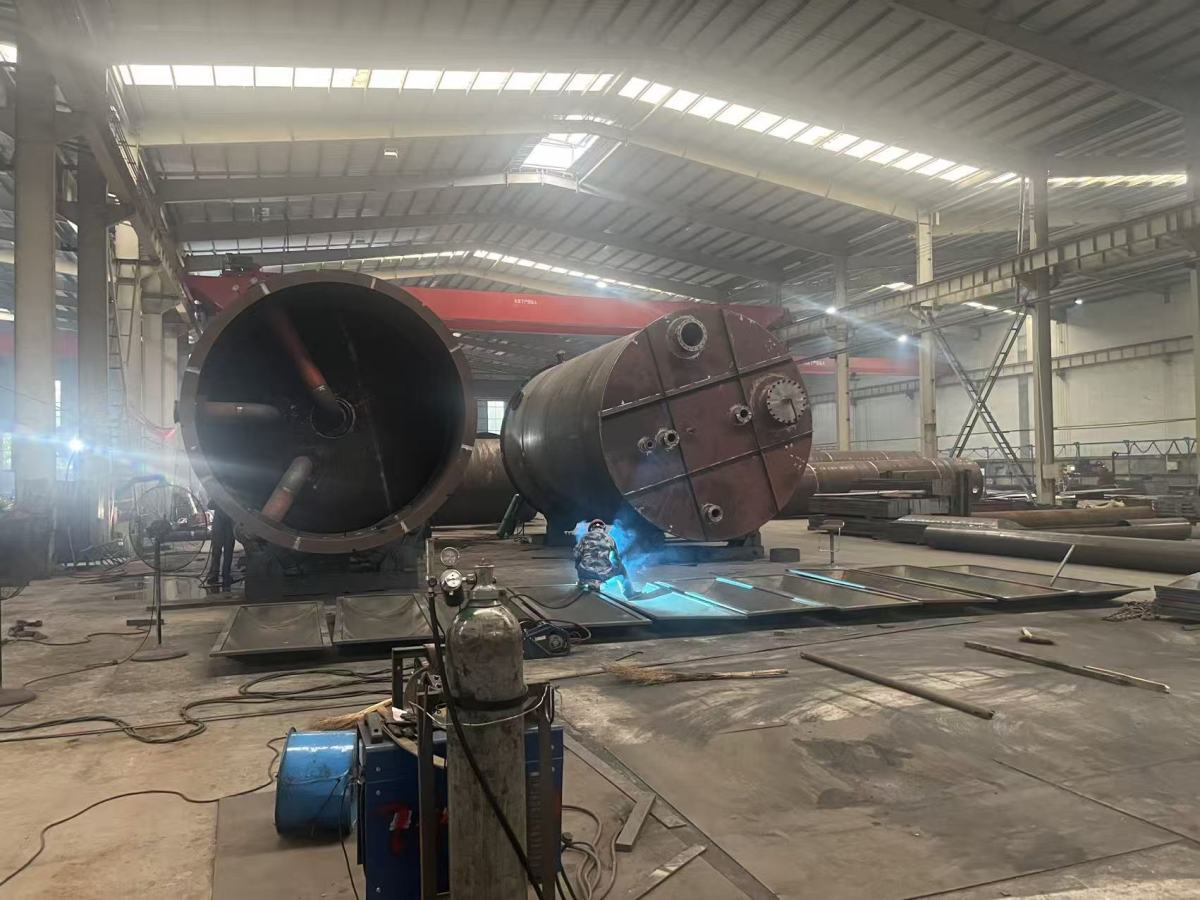
Our News
Find out about our latest news here.
Latest News
- ▶ High-Efficiency Surface Condenser Solutions:
- ▶ Health, Safety and Environment (HSE) Policy
- ▶ Conflict-of-Interest Policy
- ▶ Can a Welded Spiral Heat Exchanger Solve Fouling and Blockage Problems?
- ▶ Anti-Bribery and Corruption (ABC) Compliance Policy
- ▶ The Critical Role and Application of Heat Exchangers in the Natural Gas Treating Process
Message
Introduction
In industrial facilities, storage tanks are essential for storing liquids and gases safely. Depending on the working pressure, tanks can be classified into two main types: atmospheric storage tanks and pressure vessels. While pressure vessels often feature curved ends or heads, atmospheric tanks usually have flat roofs and flat bottoms. But why is there such a difference in design? Let’s explore.
What Is an Atmospheric Storage Tank?
An atmospheric storage tank is a container designed to operate at or near atmospheric pressure, usually with a design pressure not exceeding 0.1 MPa.
Applications: Widely used in petroleum, chemical, water treatment, food, and pharmaceutical industries.
Typical shapes: Vertical cylindrical tanks, horizontal cylindrical tanks, fixed-roof tanks, and floating-roof tanks.
Main purpose: To store liquids such as water, oil, or chemical solutions under normal pressure conditions.
Because there is no significant internal pressure, these tanks focus more on capacity, safety, and cost efficiency rather than resisting high pressure.
Structural Features of Atmospheric Tanks
Atmospheric tanks are characterized by:
Flat or slightly dome-shaped roofs and bottoms for easier manufacturing;
Thin wall design since they only withstand liquid static pressure and self-weight;
Lower fabrication cost compared with high-pressure equipment.
This explains why most oil terminals or chemical plants feature large flat roof tanks.
Why Are Atmospheric Tanks Flat, While Pressure Vessels Use Heads?
The key difference lies in stress distribution and safety requirements.
Atmospheric Tanks (Flat Roof / Flat Bottom)
Internal pressure ≈ atmospheric pressure.
Main load comes from liquid static pressure and the tank’s self-weight.
Flat plates or slightly curved structures are strong enough and cheaper to build.
Flat roofs simplify construction, welding, and maintenance.
Pressure Vessels (With Heads)
Internal pressure is significantly higher than atmospheric pressure.
Vessel walls must withstand hoop stress (circumferential stress) and axial stress.
Flat ends would concentrate stress at the center, causing deformation or even failure.
Using elliptical, torispherical, or hemispherical heads distributes pressure evenly, reduces stress concentration, and improves safety.
Curved ends also allow thinner walls compared to flat plates under the same pressure, saving material and weight.
In short: Flat roofs make tanks cheaper, while curved heads make vessels safer.

Atmospheric Storage Tanks vs. Pressure Vessels
Conclusion
The design of a tank is always determined by its operating pressure. Atmospheric storage tanks are flat because they do not face significant internal pressure, which keeps manufacturing simple and cost-effective. Pressure vessels, on the other hand, must resist high internal pressure safely, which is why they are equipped with curved heads that ensure uniform stress distribution.
When choosing between an atmospheric storage tank and a pressure vessel, companies should consider not only the type of medium but also operating pressure, safety, and cost requirements.
PROFESSIONAL CONSULTATION
If you are interested in our products and want to know more details, please leave a message here, we will reply you as soon as we can.